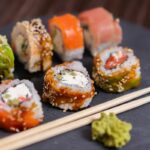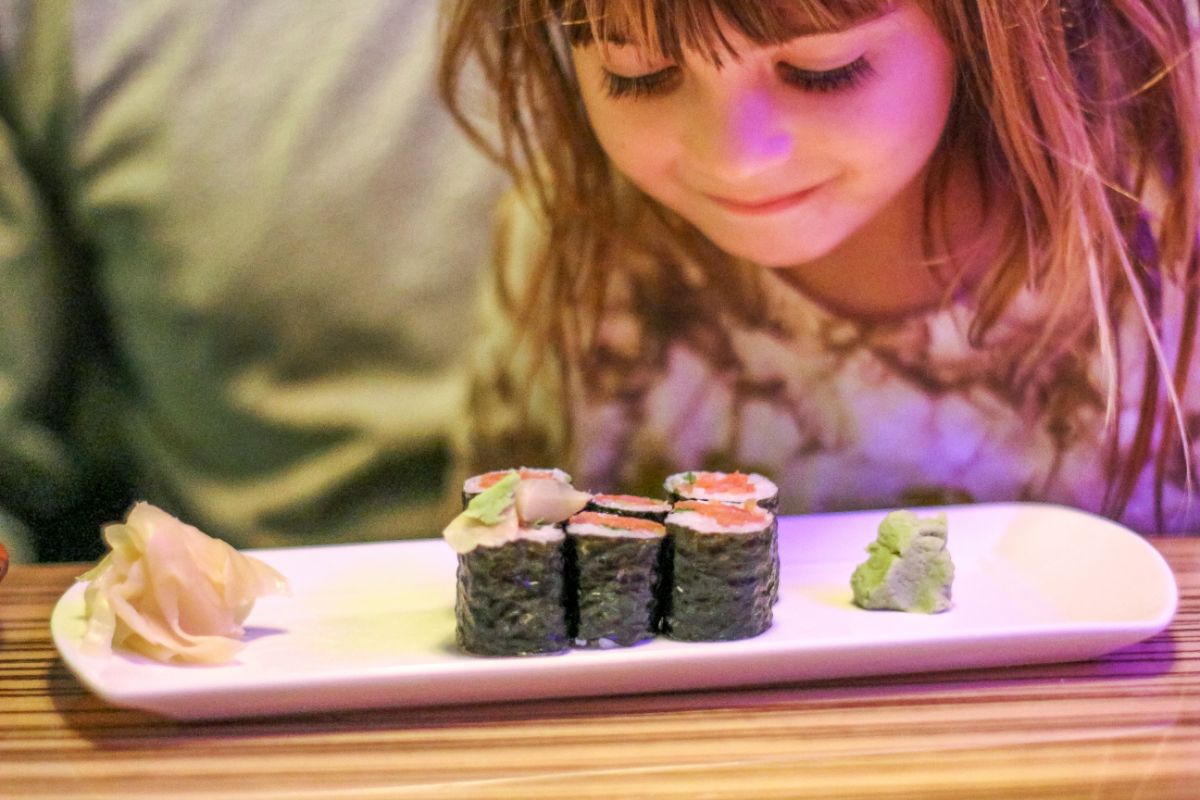Japan is full of delicious food – from sushi to gyoza, there are unlimited options in between. Today, we will be focusing on gyoza – a type of Japanese dumpling that is taking the world by storm.

Since gyoza is becoming increasingly popular, you may have a few questions – what are they? Are there different types? Is this food healthy? We will be covering everything you need to know on this topic in the sections below!
What Is Gyoza?
Gyoza are delicious dumplings that come from Japan. They are enjoyed throughout East Asia today, and can come in many different varieties, with various fillings.
A traditional gyoza will have a filling of ground pork, cabbage, soy sauce, and sometimes oyster sauce and mushrooms.
The fillings are wrapped up in a dumpling wrapper, then fried so that they get a nice crispy bottom. You can also steam gyozas if you prefer them softer, or even boil them if you like.
However, frying is the most popular method, and gets delicious results every time.
Are There Different Types?
Yes! There are typically three distinct types of gyoza that are enjoyed in Japan – sui gyoza, age (ah-geh) gyoza, and yaki gyoza.
These three types can have the same fillings and overall ingredients, but the cooking method differs from them each:
- Sui gyoza – these are nice and soft, and get boiled as their cooking method. No oil is used during cooking, so the finished result resembles a wonton dumpling that you might find in your wonton soup.
- Age gyoza – this type of gyoza is the opposite of the above. These gyozas are deep-fried in a pot of oil, which results in the finished product being wonderfully crispy. The cooking method does make these gyozas more oily, and the flavor profile is altered, but they are divine in their own right.
- Yaki gyoza – yaki gyoza may be the most common type of gyoza. They are initially cooked by being placed in a pan with a small amount of water to steam. However, the gyozas are left in the pan when the water dissipates and gets fried, making the outside crispy much like the age gyoza.
Is Gyoza Healthy?
This will depend on the type of gyoza you are enjoying, and what is inside it. As you might expect, sui gyoza (boiled only) is the healthiest option, as it does not come into contact with oil when it is being cooked.
The second-best option in terms of health would have to be the yaki gyoza. This one only fries on the bottom, and is otherwise cooked by being steamed. The least healthy gyoza option is the age gyoza, which gets deep-fried.
Generally, sui gyoza are considered to be great options for food if you are trying to be healthy. They are full of great nutrients, and combine protein, some carbs, fiber, and everything else you need in a bite.
These foods are low in calories, with a serving of six dumplings containing as little as 120 calories. This means that you would need to eat a lot of gyozas to hit 2,000 kcal (around 100 gyozas, actually).
So, you are likely to get your fill long before you get anywhere near that count. However, bear in mind that this number can fluctuate depending on the contents of the gyoza and the cooking method used.
How Many Gyozas Should You Eat?

The serving suggestion of gyozas is six. However, you can double that if you would really like! Of course, it is always a good idea to follow the serving suggestion, even if you only loosely follow it.
You may want more or less, depending on how hungry you are or how much you usually eat.
If you are making gyoza for a group, you can probably stick to making each person four to six of these delights.
What Do You Pair With Gyoza?
You may choose to pair a variety of things with your gyoza to make a whole, filling meal! The most popular options include things like miso soup, rice noodles, fried rice, and ramen.
All these options complement the gyoza nicely, and will give you more to enjoy alongside the dumplings.
Any kind of soup you like will work with gyoza, including egg drop soup and hot and sour soup. Alternatively, you could try something like Japanese potato salad, or spring rolls to pair with your gyoza.
The option you go with may depend on the time of year or climate, as some of these dishes are well-suited to cooler or warmer weather.
If you wanted to enjoy your gyoza in the summer, you could pair it with a fresh vegetable stir-fry, or even cold pasta of your choosing!
Luckily, with food, there are no real rules to follow. However, you can always try out different suggestions to see what combinations you prefer.
How Do You Eat Gyoza?
Most people prefer to enjoy their gyozas hot and straight from the pan. However, it would be foolish to simply pick one up and chow down! These dumplings should always be paired with a sauce – gyoza sauce.
This is a mixture between soy sauce, rice vinegar, garlic, green onions, and red pepper flakes. Some sauces may include additional ingredients like sesame oil or honey, too.
You should always dip one end of the gyoza in the sauce (or the whole thing if you can handle it), then enjoy the dumpling. The sauce and its delightful flavors perfectly compliment those inside the gyoza, and adds some great moisture to the dish.
Final Thoughts
There are three different types of gyozas: sui, age, and yaki. These have different cooking methods, and therefore different calories counts – which means you may want to eat different amounts of them.
Generally, gyoza are very healthy, with a low calorie count and lots of protein, fiber, and nutrients inside.
- 16 Best Websites To Watch Japanese Movies With English Subtitles - May 11, 2023
- Is ZIPAIR The Best Airline For Traveling To Japan? - May 11, 2023
- Ryu Murakami Vs Haruki Murakami – Which One Should You Read? - May 11, 2023




![How Many Types Of Sushi Are There? [Definitive Guide] How Many Types Of Sushi Are There? [Definitive Guide]](https://justaboutjapan.com/wp-content/uploads/2023/05/How-Many-Types-Of-Sushi-Are-There-Definitive-Guide-150x150.jpg)
![What Sushi Has No Fish? [Vegetarian Sushi Explained] What Sushi Has No Fish? [Vegetarian Sushi Explained]](https://justaboutjapan.com/wp-content/uploads/2023/03/What-Sushi-Has-No-Fish-Vegetarian-Sushi-Explained-150x150.jpg)

